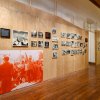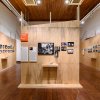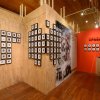Curated by Rahaab Allana
Showcasing works by: Abhijit Pal, Amarnath Praful, Anupam Singha, Arun Vijai Mathavan, Ashish Sahoo, Bharat Bhushan Mahajan, Kinshan Chand Hemlani, Kirti Kumari, Nidhin Raj, Sanjay Premanand, Sukanya Ghosh, Uzman Mohsin
We in habit a world so inundated with composite pictorial-verbal forms…and with the technology for the rapid, cheap production of words and images…nature itself threatens to become what it was in the Middle Ages: an encyclopaedic illuminated book overlaid with ornamentation…every object converted into an image with its proper label or signature.
habit a world so inundated with composite pictorial-verbal forms…and with the technology for the rapid, cheap production of words and images…nature itself threatens to become what it was in the Middle Ages: an encyclopaedic illuminated book overlaid with ornamentation…every object converted into an image with its proper label or signature.
– W.J.T. Mitchell, Author: What Do Pictures Want?
As images diversify across the globe with the expansion of digital media, this exhibition showcased as part of the Serendipity Arts Festival, aimed to foreground works unearthed in the recent past, others commissioned, which invoke elided histories of production. Ephemera-found images, everyday objects and hidden archives-all provide tangible links to creative practices and the craft of making. In the present however, which images do we acknowledge as enduring testimonies, worthy of preservation and critique? The display explored the contours of location, language, authorship and even ethnicity that present critical vectors through which practitioners, archivists and curators may unpack alternative or ‘other’ histories, casting new light on certain visual typologies.
The display began with selections of hand-made creations from the 1960s-80s of Bharat Bhushan Mahajan and Kinshan Chand Hemlani – two box-camera artists living in North India; leading onto anonymous vintage studio photographs from South India from the STARS archive; student dissertation projects around family histories in primarily Kerala and the North East from the National Institute of Design; emerging, powerful productions around Dalit representation in Nepal; to historical postcards of South Asia from the Omar Khan collection. Collectively all these works illustrated social, intellectual and technical modalities around image-making that have exponentially expanded cultures of viewing in the region, and hence refreshed our engagements with time and memory.
On the other hand, the newly supported initiatives of contemporary artists provoke inquiries into the dimensions of voice, position and agency. Each dialogues with a certain politics of viewing in poetic, ironical and intuitive ways, catalyzing our imaginings of the quotidian. A studied engagement with protesters and testimonials through manual photo prints and an installation by Uzma Mohsin; and collage/animation inspired composites from personal repositories by Sukanya Ghosh – theorized the possibility of original trajectories and orientations around perception, participation and spectatorship by accommodating assorted classes of objects.
The exhibition therefore endorsed certain viewpoints: that there can never be a flattening of history; that photographs cannot be easily canonized, and that lens-based genres are yet to be unearthed. The photograph here was treated as a social/personal document which inhabits dissenting stances by highlighting the subtexts of authority, subjectivity, and even (in)equality. Recent productions by Ashish Sahoo and Abhijit Pal further examined whether renewed, inclusive image discourses can be created in the present by displaying personalized recordings and contemporary reconfigurations-evolving photo-media, mixed imaging formats and analogue-digital pairings. Such juxtapositions overall may hopefully evoke dynamic sites of visual assertion – ideology and metaphor – as we seek new futures for these past and passing images.












